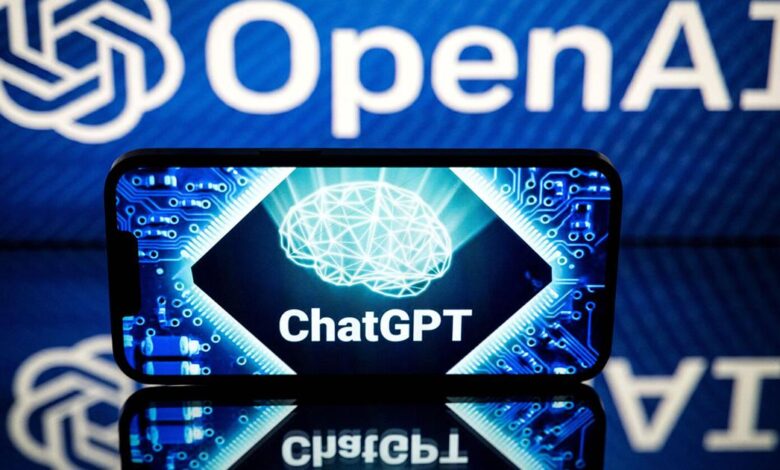Commentary: What will happen to generative AI after November’s election? | Opinion

We’ve seen it play out time and again. Industries that lack sufficient government oversight prioritize short-term profits over long-term sustainability and can cause significant harm to the economy, society and the environment. Consider social media, Big Oil and real estate.
We’re now staring down the barrel of the next industry in dire need of stronger government guardrails: generative artificial intelligence, or GenAI.
Over the past year and a half, federal agencies, among many others, have used GenAI models such as ChatGPT to generate text, images, audio and video, making GenAI a priority concern for the U.S. government. And while we may assume President Joe Biden and former President Donald Trump are at opposite ends of the political spectrum on this issue, as they are on practically every issue, their approach to AI has actually been very similar. They have pampered AI developers with significant funding and deregulation, giving them global leverage, credit and visibility.
While Biden and Trump have expressed concerns about citizens’ privacy, safety and security, the way they have regulated AI shows they’re actually on the developers’ side. That said, Biden and Trump diverge in their climate policies. Given the current stage of GenAI development and adoption and a dire need of data centers for more energy, it is the climate policy of the next president that will affect GenAI developers the most. It is worth exploring how GenAI has expanded under Biden and how it might be affected if Trump wins reelection this year.
GenAI developers have grown significantly during the Biden years, partly thanks to his administration’s various favorable policies. Last July, the Biden administration announced securing voluntary commitments from seven AI companies — Amazon, Anthropic, Google, Inflection, Meta, Microsoft and OpenAI — under the guise of underscoring “safety, security and trust.” But in reality, these so-called commitments were more like gifts because their scope is limited to GenAI tools that are overall more powerful than existing ones. For example, the commitments require public reporting of capabilities, limitations, areas of appropriate/inappropriate use, societal risks, effects on fairness and bias, but only for more powerful AI models, thus offering a carte blanche for existing models.
In September, the Biden administration announced new voluntary commitments with identical stipulations and scope for eight other AI companies — Adobe, Cohere, IBM, Nvidia, Palantir, Salesforce, Scale AI and Stability. One month later, Biden signed an executive order on AI, which offered GenAI developers even more favors, such as ordering federal agencies to support AI development and promote its use.
Perhaps the most compelling aspect of the executive order for GenAI developers is in Section 10.1(f)(i), which discourages federal agencies from “imposing broad general bans or blocks on agency use of generative AI.” This means that even in cases when an oversight agency has reasons to believe that using GenAI is harmful, it cannot ban the use. Given these supports, it is no surprise that GenAI developers have grown significantly during the Biden years, but if Trump is reelected, developers may have to adapt to a new regulatory and investment environment.
Trump is no stranger to AI. Like Biden, Trump emphasized that federal agencies should consider limiting regulatory overreach, thereby reducing barriers to innovation and growth regardless of the risks. In February 2019, Trump signed an executive order to maintain American leadership in AI and launched the American AI Initiative. Among other things, this executive order directed federal agencies to prioritize research and development in AI, enhance access to high-quality federal data and computing resources for AI researchers, set AI governance standards and build the AI workforce. In February 2020, Trump committed to doubling nondefense research and development investment in AI over two years. In December 2020, he signed an executive order on promoting the use of AI in the federal government.
These examples show that Trump’s strategy toward AI was very similar to Biden’s, and one could even argue that Biden’s policies mirrored and continued those started by Trump, except Biden seems more lenient and has offered more specific favors. But other differences between Biden and Trump could affect AI developers, with the most notable being their disagreement regarding climate change.
Just as Biden brought the U.S. back into the Paris climate accord on his first day in office, Trump could withdraw from the agreement after being reelected. Such an enormous shift in international commitments could alter the business environment for GenAI developers. Recall that in 2017, when Trump announced his plans to withdraw from the Paris agreement, 25 companies, including Apple, Google, Meta and Microsoft, published an open letter in newspapers urging the administration not to exit the agreement.
The letter highlighted the negative impact of a withdrawal on competitiveness, jobs and economic growth, and risks over time including damage to facilities and operation, as well as competitive imbalance for American companies. However, at the current pace of development and deployment of GenAI — and the expected trajectory of a growing need for energy and, concurrently, a growing environmental footprint— remaining in the agreement could slow down the growth and uptake of GenAI.



